Four years after unsung war hero Abdul Rahman Waziri flew out of Kabul Airport to start a new life in America, his remains returned there in a coffin.
The 31-year-old was shot to death on April 27 while unarmed in a parking lot dispute by a Texas gunman who has so far escaped arrest by claiming self-defense.
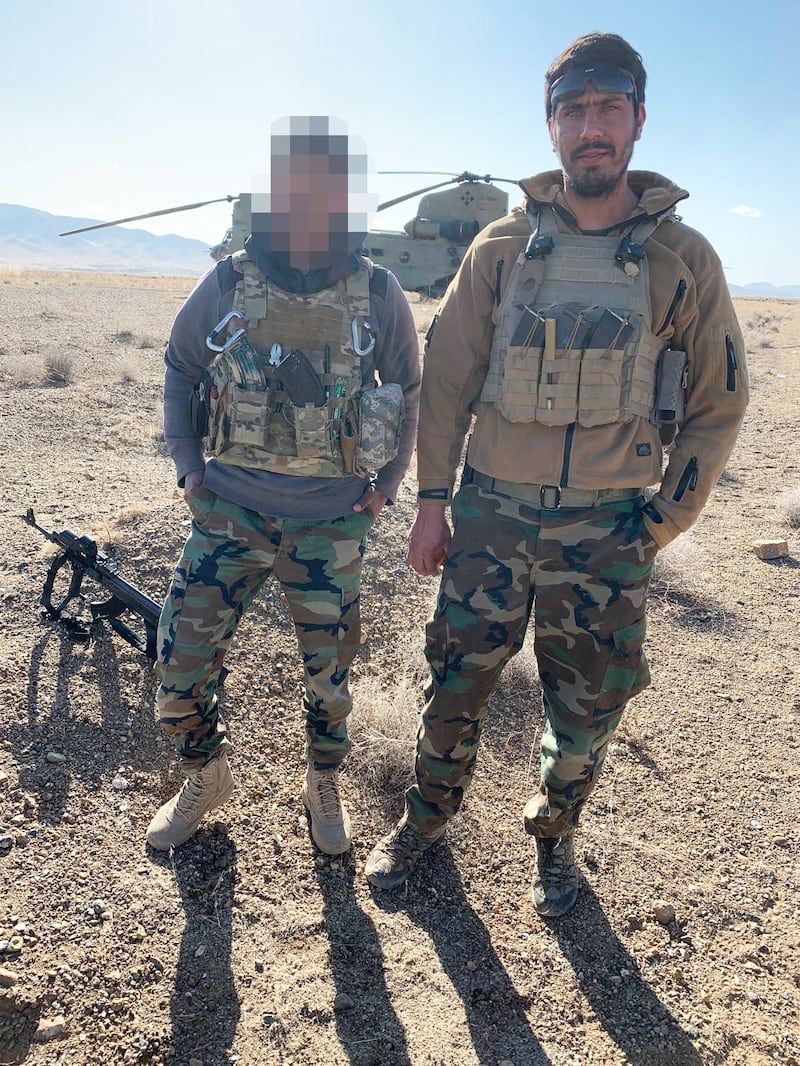
As Wazirii was buried in an elegantly simple, stone-lined grave in the Brausal District of Paktika Province, his grief-stricken wife was 8,000 miles away in Houston with their two daughters, ages four years and nine months. The older girl was repeatedly asking a question that her family did not want to answer.
“Where is my dad?”
When Waziri fled Afghanistan in 2021, the Taliban had targeted him for torture and execution as a member of the Afghan National Mine Reduction Group (NMRG). This elite, highly trained unit cleared improvised explosive devices (IEDs) ahead of American Green Berets, whose missions from 2019 on were conducted entirely at night. The NMRG had demonstrated year after year, without Hurt Locker-style bomb suits, that the bravest acts are sometimes performed on hands and knees.
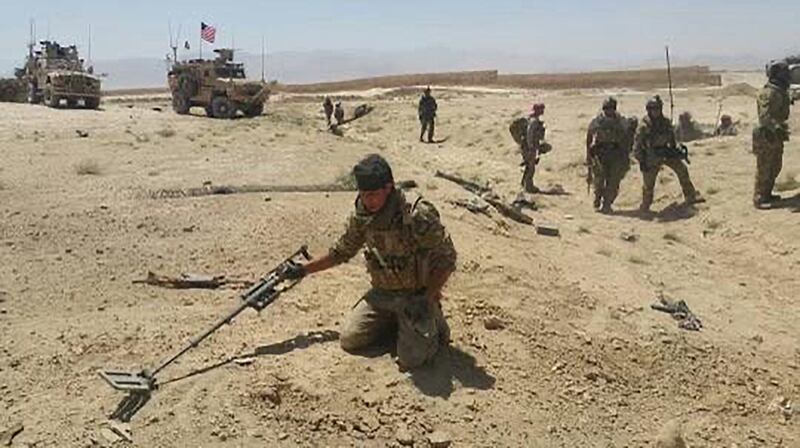
Waziri had been on Team 7 and had disabled two dozen bombs before he became an instructor training NMRG replacements for those who were killed. His older brother, Abdullah Khan, was on Team 8 and disabled 40 bombs. Khan’s 12-man unit lost three members.
“The hazards they undertook were immense,” former Green Beret Thomas Kasza told the House Foreign Affairs Committee last year. “From 2015 onwards, 22 Green Berets died, compared to 47 NMRG members. We owe them and their families a debt.”
During the chaos of the American withdrawal from Afghanistan, Wiziri had taken the time to establish safe houses for his comrades before he escaped to America. He had communicated while still in Taliban territory via encrypted messaging apps with Shireen Connor, a U.S.-based volunteer with an Afghan evacuation team.
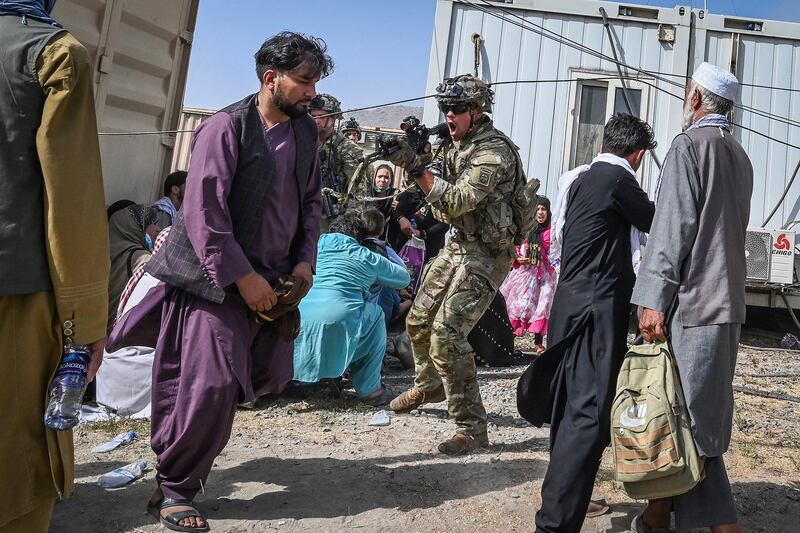
“I really have tried to underscore the panic and level of danger that was present at the time,” she told the Daily Beast. “He was a high-value Taliban target, and despite that, was still putting his life at risk to set up safe houses for other people to try and wait for potential evacuation.”
She added, “That really gave me a sense of who he was; someone who’s willing to step forward and keep doing the right thing for other people, people he doesn’t even know. A good person down to his core.”
After arriving in America, Waziri had gone to work for a Houston security company. He settled into an apartment complex at 3400 Ocee Street with his wife, Malalai Waziri, and their two daughters, Bahar, who is now four years old, and nine-month-old Zoya.
He was returning from the gym in his white Toyota Camry shortly after 9 p.m. on April 27 when he pulled over outside the apartment complex’s mailboxes. He put on his hazard lights, apparently to signal that he was just pausing there and would proceed on to a parking spot closer to his apartment after he grabbed his mail.
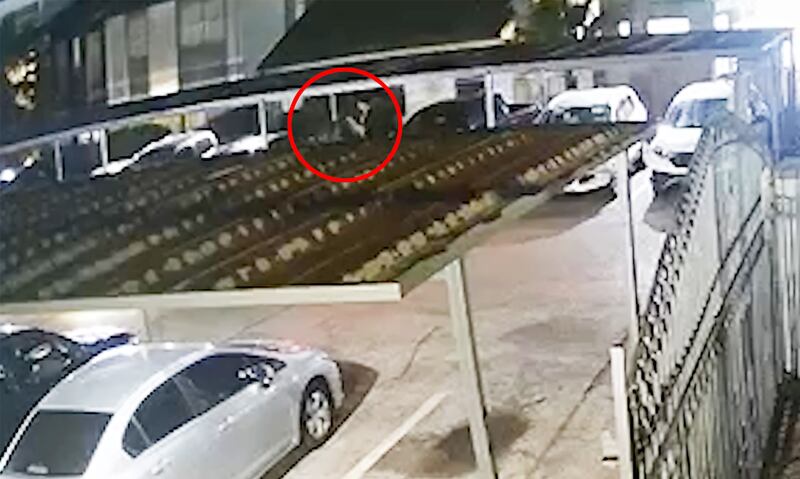
Surveillance footage shows that a black Kia pulled up moments later. But a carport roof obscured from the camera much of what followed in the minutes before a Houston police dispatcher put out a call for that address.
“Person shot is a male, gray shorts, gray shirt,” the dispatcher said. “Caller is a male, black, striped shirt, blue pants. Gun is in his pocket.”
The caller was the shooter.
“It’s about a male trying to take over this parking spot, and he shot him,” the dispatcher added.
Officers arrived moments later, where they saw the man in gray shorts and a gray shirt lying in the parking lot with gunshot wounds to his head, chest, and leg.
“This guy isn’t moving or breathing,” a cop reported over the radio.
An ambulance responded and rushed the unconscious Waziri to Ben Taub General Hospital. There, Abdullah Khan Waziri was pronounced dead. He was 31.
Back at the scene of the shooting, the caller surrendered his gun to the police.
“We’ve got one male detained,” a cop reported on the radio. “Suspect’s on scene. He says it’s self-defense.”
A sergeant called over the air for the usual ritual to begin: “Do me a favor and start putting up yellow tape.”
A cop responded, “Yeah, this is going to be a homicide most likely.”
In further keeping with standard procedure, the deceased’s family was notified. Word reached 36-year-old Khan in Florida, where he had settled with another brother, Gul Shabar Gul, 44. Gul had served as an interpreter with the Americans.
Khan and Gul flew together to Houston and arrived at the apartment complex the following morning. They saw Waziri’s blood where he had fallen. Khan asked several residents if they had seen what happened. They seemed fearful and did not respond.
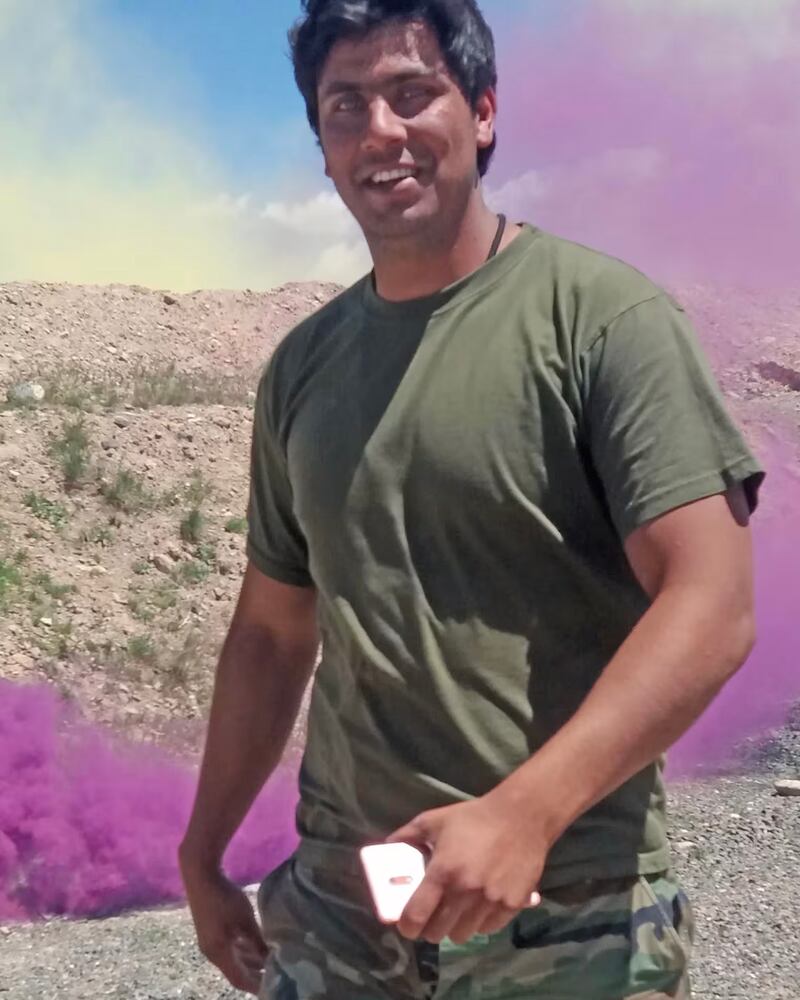
“I asked them to give me a bucket,” Khan recalled.
Khan poured out bucketful after bucketful of water and borrowed a brush.
He crouched down just like he and Waziri often had while finding and disabling IEDs with NMRG. He set to scrubbing away what remained of his younger brother’s blood.
“It was, like, in between the cracks,” he later told the Daily Beast.
Khan became aware of a man who was casually walking back and forth nearby, carrying clothes and other belongings from an apartment complex to a car in the lot. A resident told Khan that this was the man who killed Waziri.
The police had briefly handcuffed him when they responded to the scene of the shooting, but had quickly released him. He claimed he had acted in self-defense. The “stand your ground law” in Texas allows private citizens to use deadly force to defend their person or property, and there is no duty to retreat. He now remained at liberty.
“He was normal, walking in front of me,” Khan recalled. “He was not feeling like, ‘I did this with his brother, I should not show my face.’”
A retired Green Beret who learned of this disrespectful indifference and knew Khan’s physical capabilities as a highly trained special forces operator marveled at his restraint. Khan simply finished scrubbing and went with Gul to the rental office.
There, the brothers viewed the surveillance video from the time of the shooting. They saw Waziri’s Toyota and then the gunman’s Kia arrive and largely disappear from view.
At one point, Waziri and a Black male from the Kia can be seen above the upper edge of the obscuring carport roof, speaking to each other and pointing. At another point, the other man’s feet appear below the lower edge of the roof, moving toward the Kia and then quickly back toward Waziri and the Camry. What appears to be the man from the Kia then strides into full view in a striped shirt and blue shorts, almost be-bopping, as if he had nary a care.
The detectives in charge of the case did not speak to the brothers until the day after they arrived. They declined to identify the gunman. They would only say that the case was under continuing investigation and any charging decisions would be made by the Harris County district attorney. The D.A.’s office would only say the investigation was ongoing.
But, while the police officer who responded to the shooting could be heard on the radio following the usual routine, there is some question about the detectives who then took the case.
A spokesman for the Houston police department says the detectives have been conducting a thorough investigation from the very start. But a lawyer for Waziri’s family says that he discovered a spent 9-mm Hornady Luger shell casing in the vicinity of the Camry that almost certainly should have been taken into evidence. The lawyer, Omar Khawaja, also says the detectives failed to conduct a full canvass for witnesses with an interpreter who could allow them to communicate with the numerous Afghans in the complex who do not speak English.
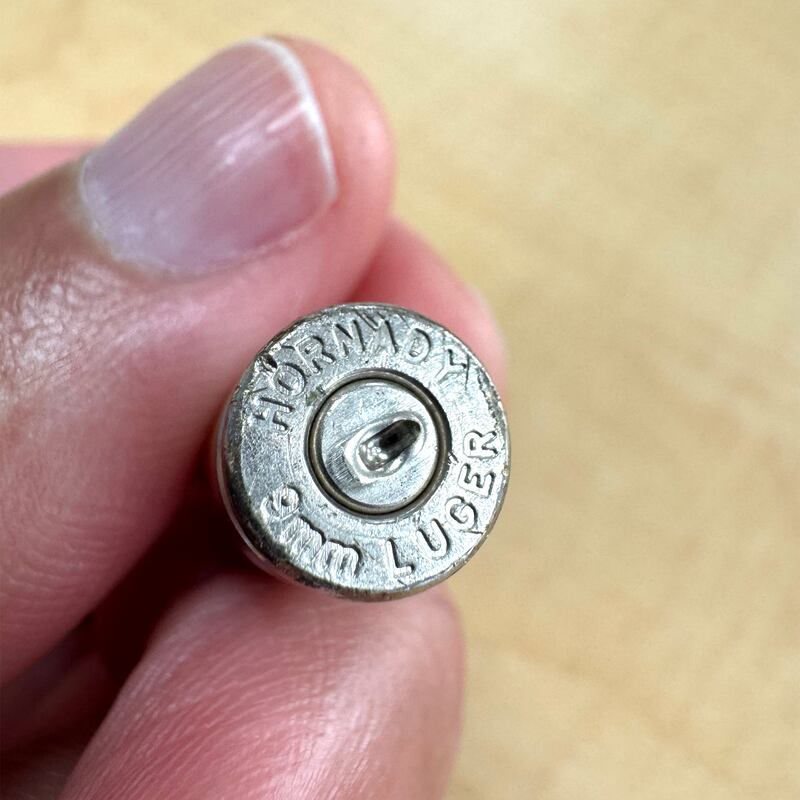
Five days after the shooting, Khawaja brought a woman to the police who said she had witnessed the entire incident from the balcony of her second-floor apartment. Khawaja says she told them that after Waziri continued on toward the mailboxes, the other man began kicking the Camry. Waziri had turned back, and there had been a verbal dispute that turned physical.
As the woman told it, Waziri had quickly subdued the man without inflicting serious injury to anything but, perhaps, his pride. The man had gone to his car and gotten a gun, loading it as he headed back toward Waziri. The witness said Waziri raised his hands to signal “don’t shoot.” The man allegedly shot him three times and then walked off with an improbable bounce in his step.
That a soldier such as Waziri would meet such an end was particularly heart-wrenching for Green Berets who served with him in Afghanistan. Retired Master Sgt. Ben Hoffman remembered that when he met Waziri, he had first been struck by the size of the 6-foot-4, 230-plus-pound Afghan. Hoffman then came to know Wazari as a “gentle giant” who, at his core, embraced the U.S. Army Special Forces motto De Oppresso Liber (To Free the Oppressed).

“It’s not about conquering the enemy; it’s about freeing people that are being conquered by the enemy,” Hoffman said, “And he was all about De Oppresso Liber. He saw his own crew, men and the kids and the women being persecuted by the Taliban, and he wanted to see them free, which is why he was willing to go and crawl on his hands and knees to clear IEDs for us.”
Hoffman went on, “Crawling on hands and knees at night under night vision goggles, digging up IEDs that could kill American special forces and other Afghans. I definitely saw him on multiple occasions doing stuff like that.
“And then you get into contact with the enemy, and see him rear up and return fire, and then, come back to us, and we’re fighting side by side.”
He added, “It’s a story of a teammate that I definitely would have gone side by side with at the gates of hell.”
Hoffman says he and Waziri shared a mindset.
“Which is, we are strong, we are trained, we are absolutely capable of destroying the enemy,” he said. “But at the same time, we are calm, and we’re able to see a situation and draw back and escalate or deescalate as needed.”
That was Wiziri.
“He was all about bringing peace to a situation, if he could.”
In the meantime, Khan and Gul brought their brother’s widow and children to Florida.
“My brother’s wife, she’s like, ‘My husband was not a person to hurt anybody. My husband was always trying to save other people’s lives,’” Khan told the Daily Beast. “She was talking the whole night and day about that, and now she’s panicking and doesn’t know where she is. But then we spray water on her face … and then, she gets better.”

The nine-month-old is too young to ever remember her father, but the four-year-old keeps asking for him.
“She’s always asking, ‘Where is he? When is he coming?’” Khan told the Daily Beast at the start of last week. “And I’m like, ‘He’s in work. He’s coming. He’s doing (his) job right now.’”
The family decided to hold off telling the girl the truth, partly because that would include telling her that, so far, nothing has happened to the man who shot her father. She had become only more insistent on Wednesday.
“She said, ‘Tell my father to take me back to Texas,’” he reported. “And I’m like, ‘Okay.’”
He told the Daily Beast that he felt the time was nearing when he would have to tell her the truth.
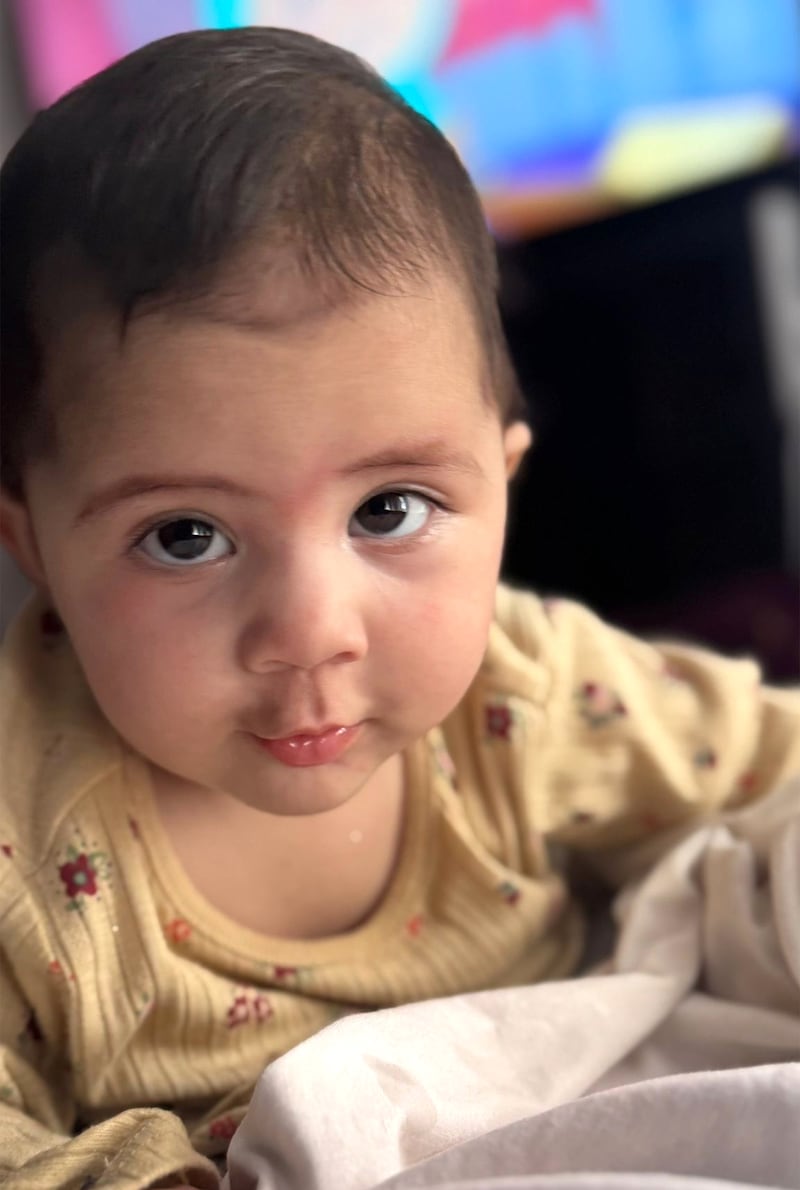
“I will just say, ‘He’s not coming to you anymore, he is not with us anymore,’” Khan said. “Maybe that’s all I can say to her.”
But over breakfast on Friday morning, the girl’s mother told Khan to hold off.
“She said, ‘No, just keep it like this, don’t tell her,’” Khan told the Daily Beast. “I said, ‘One day, she needs to know.’ [The wife] said, ‘Yeah, but we can say, like, ‘He’s here, he’s there.’’ And maybe she forgets later on. And then I’m like, ‘Okay, whatever you say.’”
Khan called the police and was told he could leave a message, as he had been instructed to do on at least five other occasions. He has yet to receive a call back.
“I’ve been calling so many times, and nobody responded, and my message is, ‘I want to know where is the investigation and what’s going on?’” Khan reported. “So they said, ‘Okay, she will call you back. I’m gonna take a note and leave it on her desk with your phone number.’”
A spokesman for the district attorney was saying, “We are still awaiting investigation results before making a decision.”
Khawaja told the Daily Beast that he had heard that the district attorney will turn the matter over to the grand jury and let it decide whether the gunman should be charged.
He said that the witness from the second-floor balcony had become so frightened after the gunman remained at liberty despite her account that she had left the country. But the police have her statement, and when Khawaja spoke to her, she told him she would still be willing to testify.
“I don’t know what the mechanics of that look like in terms of getting her back over here,” he said.
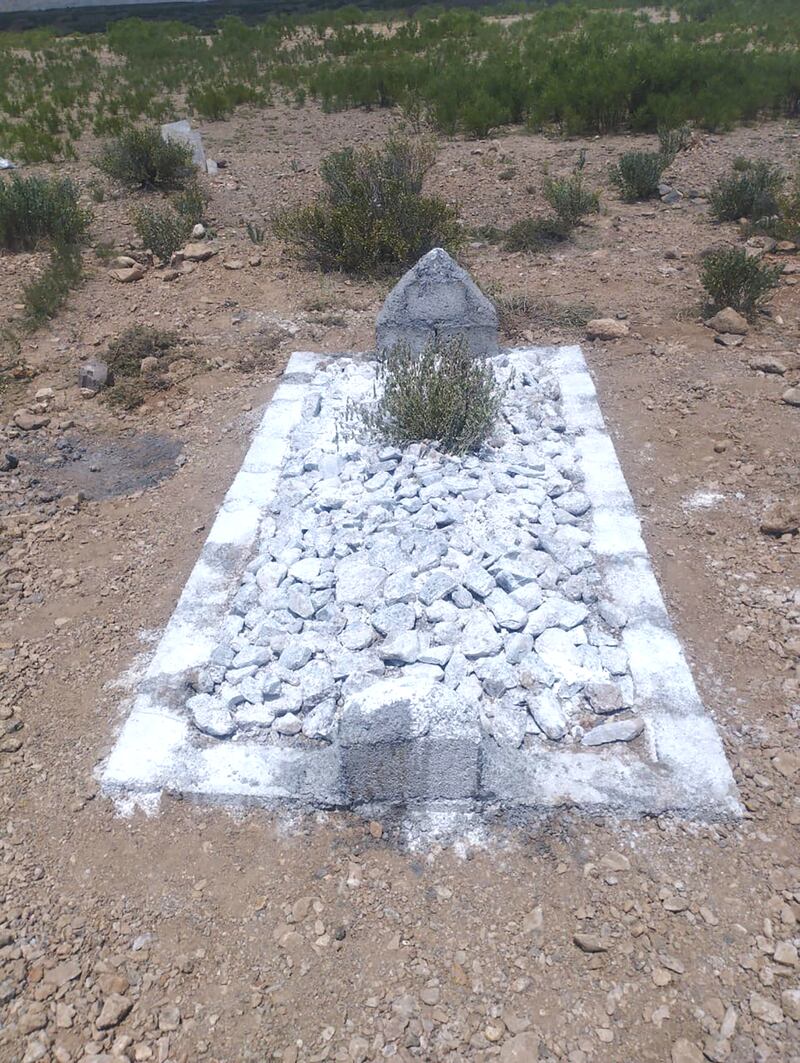
Khawaja added that there was supposedly a second witness who had been smoking a cigarette nearby at the time of the shooting, but he had apparently not come forward. He had likely also seen the police handcuff and immediately release the gunman.
In the weeks since the shooting, Hoffman and other Green Berets have issued calls for justice. Reports of the shooting appeared in various news outlets, including local TV stations, the Daily Mail, People, the New York Post, and then in greater detail by NBC News. Shireen Connor wrote an impassioned letter to Houston Mayor John Whitmire describing Waziri’s selfless courage.
“Always helping other people in the face of significant personal peril,” she wrote. “How do you define a human being like this?”
Whatever the authorities do or do not do, the four-year-old daughter of that magnificent human will never see her daddy again.
The post A War Hero, Wounded Pride, and a Killing to Shame Us All appeared first on The Daily Beast.




